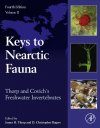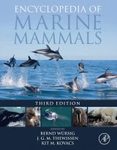About this book
Thorp and Covich's Freshwater Invertebrates, Volume 2: Keys to Nearctic Fauna, Fourth Edition presents a comprehensive revision and expansion of this trusted professional reference manual and educational textbook-from a single North American tome into a developing multivolume series covering inland water invertebrates of the world.
Readers familiar with the first three editions (then titled Ecology and Classification of North American Freshwater Invertebrates) will welcome this new volume. The series, now entitled Thorp and Covich's Freshwater Invertebrates, (edited by J.H. Thorp), began with Volume 1: Ecology and General Biology, (edited by J.H. Thorp and D.C. Rogers).
It now continues in Volume 2 with taxonomic coverage of inland water invertebrates of the Nearctic zoogeographic region. As in previous editions, all volumes of the fourth edition are designed for multiple uses and levels of expertise by professionals in universities, government agencies, and private companies, as well as by undergraduate and graduate students.
Contents
Thorp and Covich’s Freshwater Invertebrates
Dedications from the Editors
Contributors to Volume II
About the Editors
Preface to the Fourth Edition
Preface to Volume II
Acknowledgments for Volume II
Chapter 1. Introduction
Introduction to This Volume and Chapter 1
Components of Taxonomic Chapters
How to Use This Volume
Key to Kingdoms and Phyla in This Volume
Chapter 2. Protozoa
Introduction
Limitations
Terminology and Morphology
Material Preparation and Preservation
Acknowledgments
Keys to Protozoa
Chapter 3. Phylum Porifera
Introduction
Limitations
Terminology and Morphology
Material Preparation and Preservation
Acknowledgments
Keys to SpongilliDa of the Nearctic Region
Chapter 4. Phylum Cnidaria
Introduction
Limitations
Terminology and Morphology
Material Preparation and Preservation
Keys to Freshwater Cnidaria
Chapter 5. Phylum Platyhelminthes
Introduction
Limitations
Terminology and Morphology
Material Preparation and Preservation
Keys to Platyhelminthes
Chapter 6. Phylum Nemertea
Introduction
Limitations
Terminology and Morphology
Material Preparation and Preservation
Keys to Nemertea
Chapter 7. Phylum Gastrotricha
Introduction
Limitations
Terminology and Morphology
Material Preparation and Preservation
Keys to Gastrotricha
Chapter 8. Phylum Rotifera
Introduction
Limitations
Terminology and Morphology
Material Preparation and Preservation
Key to Freshwater Rotifers (Class Eurotatoria)
Chapter 9. Phylum Nemata
Introduction
Limitations
Terminology and Morphology
Material Preparation and Preservation
Keys to Freshwater Nemata
Chapter 10. Phylum Nematomorpha
Introduction
Limitations
Terminology and Morphology
Material Preparation and Preservation
Keys to Gordiida
Chapter 11. Phylum Mollusca
Introduction to Mollusca
Class Gastropoda
Class Bivalvia
Bivalvia: Unionoida: Unionidae: Genera
Chapter 12. Phylum Annelida
Introduction to the Phylum
Class Clitellata
Subclass Oligochaeta
Subclass Branchiobdellidea
Subclass Hirudinida
Class Aphanoneura
Class Polychaeta
Chapter 13. Phylum Ectoprocta (Bryozoa)
Introduction
Limitations
Terminology and Morphology
Material Preparation and Preservation
Keys to Freshwater Ectoproct Bryozoans
Chapter 14. Phylum Entoprocta
Introduction
Terminology and Morphology
Material Preparation and Preservation
Chapter 15. Phylum Tardigrada
Introduction
Limitations
Terminology and Morphology
Material Preparation and Preservation
Keys to Freshwater Tardigrada
Chapter 16. Phylum Arthropoda
Introduction to the Phylum
Subphylum Chelicerata
Subclass Araneae
Subclass Acari
Sarcoptiformes: Oribatida
Trombidiformes: Prostigmata
Family Halacaridae
Parasitengonina: Hydrachnidiae and Stygothrombiae
Subphylum Crustacea
Class Hexapoda
Class Branchiopoda
Class Ostracoda
Class Maxillopoda
Subclass Cirripedia
Subclass Copepoda
Class Malacostraca
Order Bathynellacea
Order Amphipoda
Order Tanaidacea
Order Isopoda
Order Decapoda
Crustacea: Malacostraca: Decapoda: Astacidea: Families
Dendrobranchiata
Caridea
Order Mysida
Order Stygiomysida
Taxonomy Index
Customer Reviews
Biography
Dr. James H. Thorp has been a Professor in the Department of Ecology and Evolutionary Biology at the University of Kansas (Lawrence, KS, USA) and a Senior Scientist in the Kansas Biological Survey since 2001. Prior to returning to his alma mater, Prof. Thorp was a Distinguished Professor and Dean at Clarkson University, Department Chair and Professor at the University of Louisville, Associate Professor and Director of the Calder Ecology Center of Fordham University, Visiting Associate Professor at Cornell, and Research Ecologist at the University of Georgia's Savannah River Ecology Laboratory. He received his Baccalaureate from the University of Kansas (KU) and both Masters and Ph.D. degrees from North Carolina State. Those degrees focused on zoology, ecology, and marine biology, with an emphasis on the ecology of freshwater and marine invertebrates. Dr. Thorp is currently on the editorial board of two journals (River Research and Applications and River Systems) and is a former President of the International Society for River Science. He teaches freshwater, marine, and general ecological courses at KU, and his Masters and doctoral graduate students work on various aspects of the ecology of organisms, communities, and ecosystems in rivers, reservoirs, and wetlands. Prof. Thorp's research interests and background are highly diverse and span the gamut from organismal biology to community, ecosystem, and macrosystem ecology. He works on both fundamental and applied research topics using descriptive, experimental, and modeling approaches in the field and lab. While his research emphasizes aquatic invertebrates, he also studies fish ecology, especially as related to food webs. He has published more than one hundred refereed journal articles, books, and chapters, including three single-volume editions of Ecology and Classification of North American Freshwater Invertebrates (edited by J.H. Thorp and A.P. Covich) and the first volume (Ecology and General Biology) in the current fourth edition.
Dr. D. Christopher Rogers is a research zoologist at the University of Kansas with the Kansas Biological Survey and is affiliated with the Biodiversity Institute. He received his Ph.D. degree from the University of New England in Armidale, NSW, Australia. Christopher specializes in freshwater crustaceans (particularly the Branchiopoda and the Decapoda) and the invertebrate fauna of seasonally astatic wetlands on a global scale. He has numerous peer reviewed publications in crustacean taxonomy and invertebrate ecology, as well as published popular and scientific field guides and identification manuals to freshwater invertebrates. Christopher is an Associate Editor for the Journal of Crustacean Biology and a founding member of the Southwest Association of Freshwater Invertebrate Taxonomists. He has been involved in aquatic invertebrate conservation efforts all over the world.






































